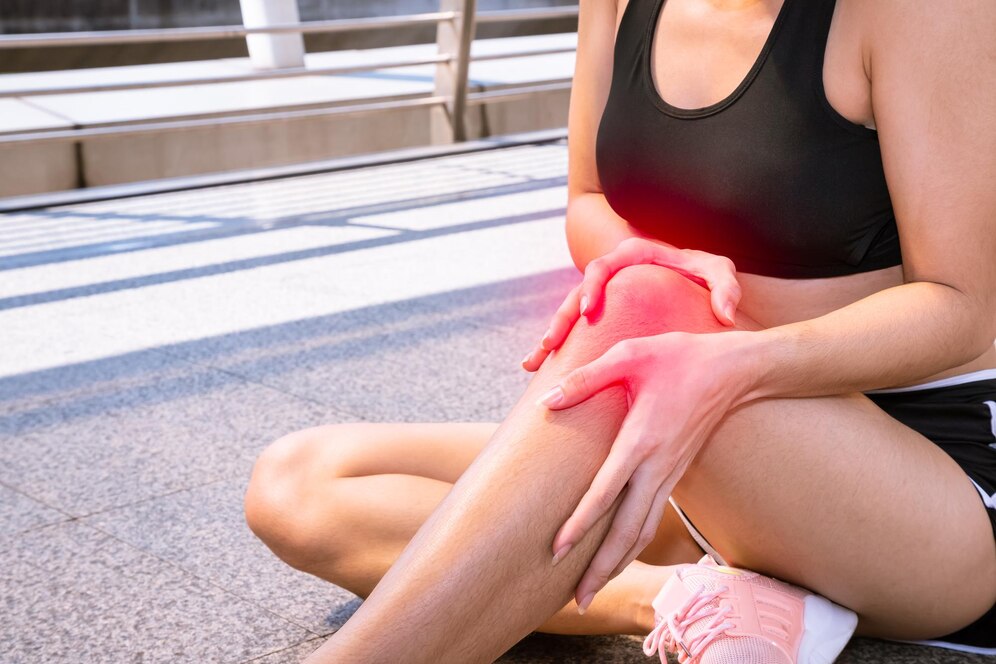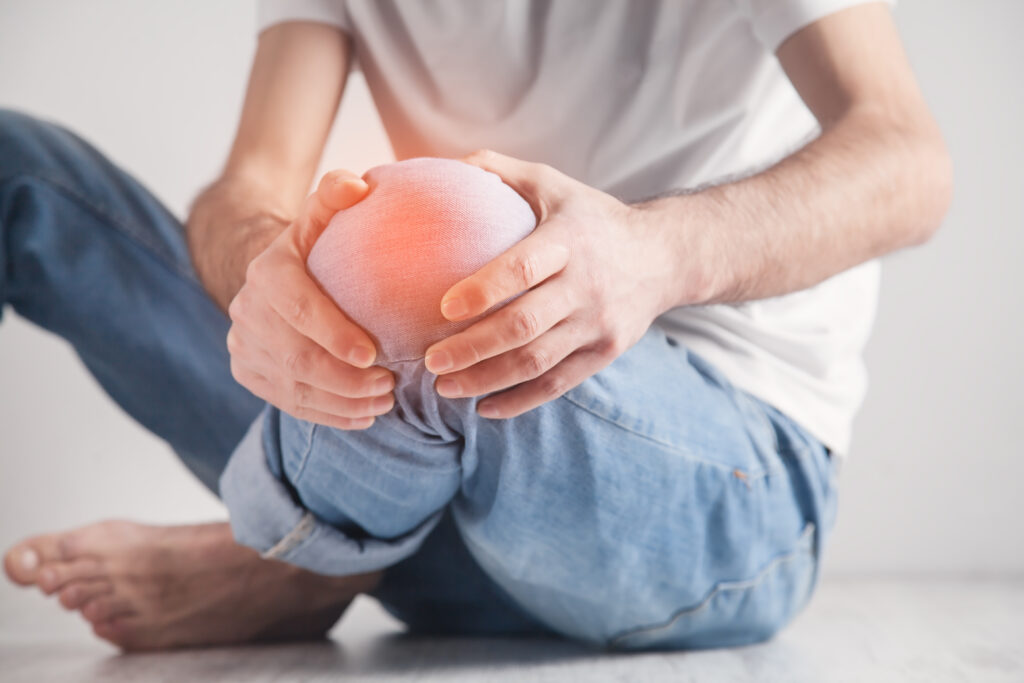When you experience a sports injury, the path to recovery can feel overwhelming. In Calhoun, however, innovative solutions are available to help you regain strength and confidence. By exploring personalized treatment plans and cutting-edge therapies, you can address not just the physical aspects of healing but also the mental challenges that arise. As you navigate this journey, you'll discover the integral role of community resources and success stories that inspire resilience. What's the key to revealing your recovery potential?
Understanding Sports Injuries
Sports injuries can happen to anyone, whether you're a weekend warrior or a seasoned athlete. Understanding the nature of these injuries is vital for both prevention and recovery. They often result from overuse, improper technique, or lack of conditioning. When you push your body beyond its limits, you increase the risk of strains, sprains, fractures, or even more severe injuries.
You might think you're invincible, but ignoring warning signs can lead to long-term damage. Pain, swelling, and reduced mobility are signals that your body needs attention. Be mindful of how your body feels during and after physical activity. If something doesn't feel right, it's important to listen to those signals and take action before the situation worsens.
Different sports carry unique injury risks. For example, runners often deal with shin splints or tendonitis, while basketball players might face ankle sprains or knee injuries. Knowing the common injuries associated with your sport can help you take preventative measures.
Proper warm-up, cool-down, and stretching routines can also play a significant role in reducing injury risk. Equally important is maintaining overall physical fitness. Strengthening muscles and improving flexibility can create a buffer against injuries.
Finally, don't underestimate the importance of rest and recovery. Allowing your body time to heal can make all the difference. By understanding sports injuries, you empower yourself to make informed decisions that can keep you active and healthy for years to come.
Effective Rehabilitation Techniques
When you're recovering from a sports injury, personalized treatment plans can make a huge difference in your healing journey.
Combining these plans with advanced therapeutic modalities helps you regain strength and mobility effectively.
Let's explore how these techniques can support your recovery and get you back in the game.
Personalized Treatment Plans
Tailored treatment plans are essential for effective rehabilitation, especially when recovering from a sports injury. Each athlete's needs are unique, and a one-size-fits-all approach simply won't cut it. By evaluating your specific injury, lifestyle, and goals, healthcare professionals can create a plan that truly fits you.
Your personalized treatment plan should include a combination of therapeutic exercises, strength training, and flexibility routines designed to target your injury and enhance your overall performance. Regular evaluations will help track your progress, allowing adjustments in your plan as needed. This dynamic approach not only speeds up recovery but also minimizes the risk of re-injury.
In parallel, addressing your mental health is imperative. Incorporating techniques like visualization and mindfulness can help you stay motivated and focused on your recovery journey.
It's also essential to maintain open communication with your healthcare provider, ensuring you're comfortable with your plan and any modifications.
Ultimately, a personalized treatment plan empowers you to take control of your recovery. By committing to this tailored approach, you increase your chances of returning to the sport you love stronger and more resilient than before.
Advanced Therapeutic Modalities
Incorporating advanced therapeutic modalities can greatly enhance your rehabilitation process. These techniques, such as ultrasound therapy, electrical stimulation, and cryotherapy, target specific injuries and promote faster healing. By utilizing these methods, you can reduce pain and inflammation while improving blood flow to the affected area.
Ultrasound therapy uses sound waves to penetrate deep tissue, promoting cellular repair and decreasing stiffness. On the other hand, electrical stimulation sends gentle electrical impulses to stimulate muscles, aiding in muscle recovery and strength.
Cryotherapy, which involves exposure to cold temperatures, helps numb pain and reduce swelling, allowing you to move more freely.
In addition to these modalities, consider integrating techniques like dry needling or laser therapy into your routine. Dry needling can relieve tension in tight muscles, while laser therapy promotes tissue healing through light energy.
Each of these approaches can be tailored to your specific needs, ensuring a thorough rehabilitation experience.
Role of Physical Therapy
Physical therapy plays an important role in the recovery process after a sports injury. When you suffer an injury, your body often needs guidance to heal properly and regain strength. A skilled physical therapist works with you to create a personalized rehabilitation program tailored to your specific needs.
First, your therapist will assess your injury and evaluate your range of motion, strength, and functional abilities. This thorough assessment helps identify the areas that need focus. By setting clear goals, your therapist can develop a structured plan to help you recover efficiently.
You'll engage in various exercises designed to improve flexibility, strength, and coordination. These exercises are vital for restoring normal movement patterns and guaranteeing that you return to your sport safely. Your therapist may also incorporate manual therapy techniques, such as massage or joint mobilization, to reduce pain and improve circulation.
Moreover, physical therapy emphasizes education. You'll learn about your injury, the healing process, and strategies to prevent future injuries. Understanding your body's mechanics can empower you to make informed decisions about your training and recovery.
Throughout your rehabilitation journey, your therapist will monitor your progress and adjust your program as needed. This adaptability guarantees that you're always working towards the best possible recovery and performance.
Innovative Treatment Options
When it comes to recovering from sports injuries, innovative treatment options can make a significant difference. You might be surprised to learn about the variety of advanced therapies available that cater specifically to athletes like you.
These treatments not only enhance recovery time but also improve performance and prevent future injuries.
One exciting option is regenerative medicine, which uses your body's own healing capabilities. Techniques like platelet-rich plasma (PRP) therapy involve drawing a small amount of your blood, processing it to concentrate the healing platelets, and injecting it back into the injured area.
This process can accelerate healing and reduce pain, allowing you to return to your sport faster.
Another beneficial approach is cryotherapy. By exposing your body to extremely cold temperatures for a short period, you can reduce inflammation and pain.
Many athletes swear by this method for its quick recovery benefits after intense training sessions or injuries.
You might also consider electrical stimulation therapy, which uses electrical impulses to stimulate muscles and promote healing.
This treatment can help reduce muscle atrophy during recovery and improve overall muscle function.
Lastly, don't overlook the power of advanced modalities like dry needling, which targets trigger points in the muscle to alleviate pain and improve mobility.
Each of these innovative options can be tailored to your specific needs, helping you recover more effectively and get back to doing what you love.
Embrace these treatments, and release your full recovery potential!
Nutritional Support for Recovery
While innovative treatments are essential for recovery, nutritional support plays an equally important role in helping your body heal. The food you consume directly impacts your recovery process, influencing inflammation, muscle repair, and overall energy levels. To optimize your healing, it's imperative to focus on a balanced diet rich in essential nutrients.
First, prioritize protein. It's the building block for muscle repair and tissue regeneration. Aim for lean sources, like chicken, fish, beans, and legumes. Incorporating these into your meals can greatly boost your recovery.
Next, don't underestimate the power of healthy fats. Omega-3 fatty acids, found in fish, walnuts, and flaxseeds, can help reduce inflammation, making your recovery smoother. Additionally, whole grains provide the necessary carbohydrates for energy, which is crucial when you're active in your rehabilitation.
Vitamins and minerals should also be part of your recovery plan. Vitamins C and E, along with zinc, are known for their roles in tissue healing and immune function. Fresh fruits and vegetables, such as oranges, berries, and spinach, are fantastic sources of these nutrients.
Lastly, hydration shouldn't be overlooked. Water is essential for every bodily function, including recovery. Staying well-hydrated helps in nutrient transport and muscle function.
Incorporating these nutritional elements into your daily routine not only aids in recovery but sets a strong foundation for your future athletic performance. Your body will thank you for the attention you give to your diet during this imperative time.
Importance of Rest and Recovery
Understanding the importance of rest and recovery is essential for athletes seeking to bounce back from injuries. You might think that pushing through the pain or continuing your training regimen will speed up your return to the field, but that's often a misconception. Rest isn't just a luxury; it's a crucial component of your recovery process.
When you rest, your body has the opportunity to repair damaged tissues, reduce inflammation, and restore your energy levels. This recovery phase is where the real healing happens. Ignoring it can lead to prolonged injuries or even new ones, which can keep you sidelined longer than necessary.
Incorporating rest days into your training schedule allows your muscles and joints to recover. It can be tempting to skip these days, but remember, rest enhances your performance. You'll come back stronger and more resilient.
Additionally, quality sleep plays an essential role in recovery. It's during sleep that your body releases growth hormones critical for tissue repair. Aim for 7-9 hours of quality sleep each night to support your recovery efforts.
Finally, consider active recovery methods such as gentle stretching or low-impact activities like swimming or cycling. These can promote blood flow and aid in healing without putting additional strain on your injured area.
Prioritizing rest and recovery isn't just about taking time off; it's about strategically planning your path back to peak performance. Listen to your body, and don't underestimate the power of rest in your recovery journey.
Community Resources in Calhoun
After prioritizing rest and recovery, it's time to explore the community resources available in Calhoun that can support your healing journey. The local community offers a variety of options to help you regain strength, flexibility, and confidence after an injury.
These resources can be invaluable in getting you back on your feet and back into the game.
Here are some key community resources you should consider:
- Physical Therapy Clinics: These clinics provide personalized rehabilitation programs tailored to your specific injury and needs. Experienced therapists work with you to improve mobility and strength.
- Community Sports Organizations: Engaging with local sports groups can help you connect with fellow athletes and find support during your recovery. They often host workshops and training sessions focused on injury prevention.
- Fitness Centers: Many gyms in Calhoun offer specialized classes designed for injury recovery, including low-impact workouts and strength training. This is a great way to stay active while you heal.
- Support Groups: Joining a local support group can provide emotional encouragement and practical advice from others who've faced similar challenges.
Utilizing these resources not only aids in your physical recovery but also fosters a sense of community. By tapping into what Calhoun has to offer, you can enhance your healing process and make your return to sports safer and more effective.
Don't hesitate to reach out and take advantage of the support available to you!
Mental Health in Injury Recovery
Injury recovery isn't just about physical healing; it's also essential to address your mental health. When you experience an injury, the emotional toll can be just as significant as the physical pain. You might feel frustration, sadness, or even anxiety about getting back to your sport. Acknowledging these feelings is the first step toward recovery.
You're not alone in this journey. Many athletes face similar challenges, and seeking support can make a huge difference. Talk to friends, family, or teammates who understand your situation. Sharing your experiences can lighten the emotional load and provide you with encouragement.
Consider working with a sports psychologist or counselor who specializes in injury recovery. They can offer strategies to cope with the emotional aspects of healing, helping you maintain a positive mindset. Techniques such as visualization, mindfulness, and cognitive-behavioral strategies can empower you to focus on recovery rather than on what you're missing in your sport.
Don't forget about the importance of setting realistic goals. Break your recovery down into manageable steps. Celebrate small victories along the way, as this can boost your mood and motivation.
Keeping a journal can also help you track your progress and emotions, providing insight into your mental state.
Preventive Measures for Athletes
To stay injury-free, it's essential to incorporate proper warm-up techniques into your routine.
You should also focus on strength and flexibility training to enhance your performance and reduce the risk of injuries.
Proper Warm-Up Techniques
A proper warm-up is essential for every athlete looking to enhance performance and reduce the risk of injury. It prepares your body for the demands of physical activity by increasing blood flow, raising your heart rate, and improving flexibility.
To maximize your warm-up, consider these key techniques:
- Dynamic Stretching: Engage in movements that mimic your sport, such as leg swings or arm circles, to loosen up your muscles.
- Gradual Intensity: Start with low-intensity activities, like jogging or brisk walking, to slowly elevate your heart rate.
- Sport-Specific Drills: Incorporate drills that are specific to your sport, helping your body adapt to the movements you'll be performing.
- Mental Focus: Use this time to mentally prepare. Visualize your performance and set a positive mindset.
Strength and Flexibility Training
Building on the importance of a proper warm-up, strength and flexibility training plays a significant role in injury prevention for athletes. You need to incorporate both elements into your routine to enhance performance and safeguard against injuries.
Strength training helps you build muscle endurance and power, which are essential for supporting your joints during activity. It's critical to target all major muscle groups, focusing on both the upper and lower body.
On the other hand, flexibility training increases your range of motion and helps prevent muscle strains. Incorporate dynamic stretches before your workouts and static stretches afterward to improve overall flexibility.
Additionally, yoga and Pilates can be excellent for developing both strength and flexibility simultaneously. By committing to a balanced regimen, you're not only preparing your body for the demands of your sport but also reducing the risk of injuries that can sideline you.
Success Stories From Calhoun Athletes
Calhoun athletes have demonstrated remarkable resilience and determination in overcoming sports injuries, turning challenges into triumphs. Their stories are a reflection of the power of perseverance and the effectiveness of local recovery programs. You can find inspiration in the journeys of your fellow athletes who faced setbacks yet emerged stronger.
Here's a look at some key success stories that highlight their incredible recoveries:
- Jessie, the Track Star: After a severe ankle sprain, Jessie committed to a rigorous rehabilitation program and returned to win the state championship.
- Mike, the Football Player: Following knee surgery, Mike focused on strength training and agility drills, making a comeback as a top defensive player.
- Sarah, the Gymnast: With a broken wrist, Sarah utilized specialized therapy to regain her flexibility and ultimately competed at the national level.
- Ethan, the Basketball Prodigy: After battling a shoulder injury, Ethan embraced physical therapy and nutritional guidance, leading his team to the regional finals.
These stories exemplify how Calhoun's athletes not only recover but thrive. By tapping into local resources, connecting with dedicated trainers, and maintaining a positive mindset, you too can navigate the ups and downs of sports injuries.
Conclusion
In Calhoun, you've got the tools and support to overcome sports injuries and get back to doing what you love. By embracing effective rehabilitation techniques, innovative treatments, and focusing on both your physical and mental health, you can access your full recovery potential. Don't forget about the importance of nutrition and community resources—they can make a big difference in your journey. Remember, you're not alone; many athletes like Jessie and Mike have triumphed, and so can you!



